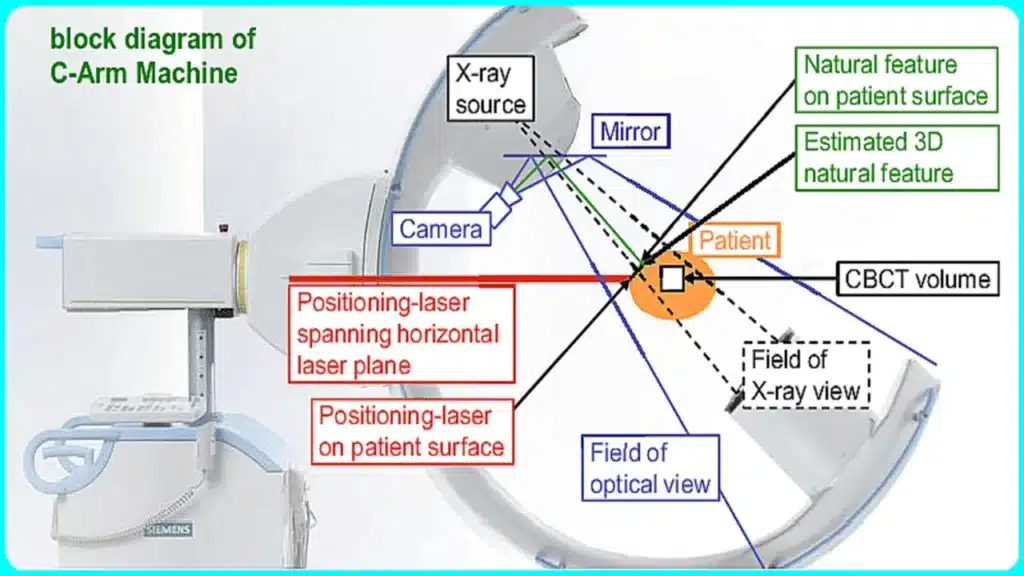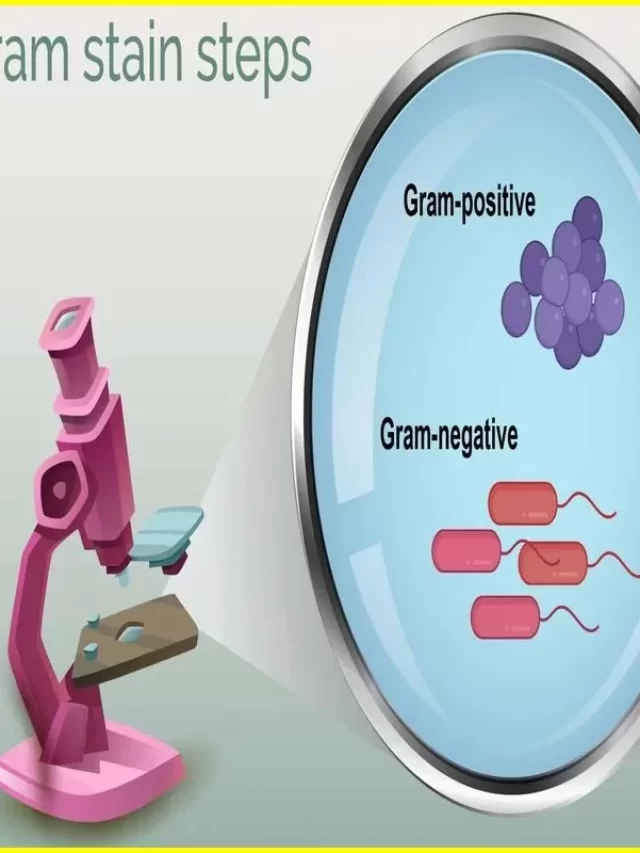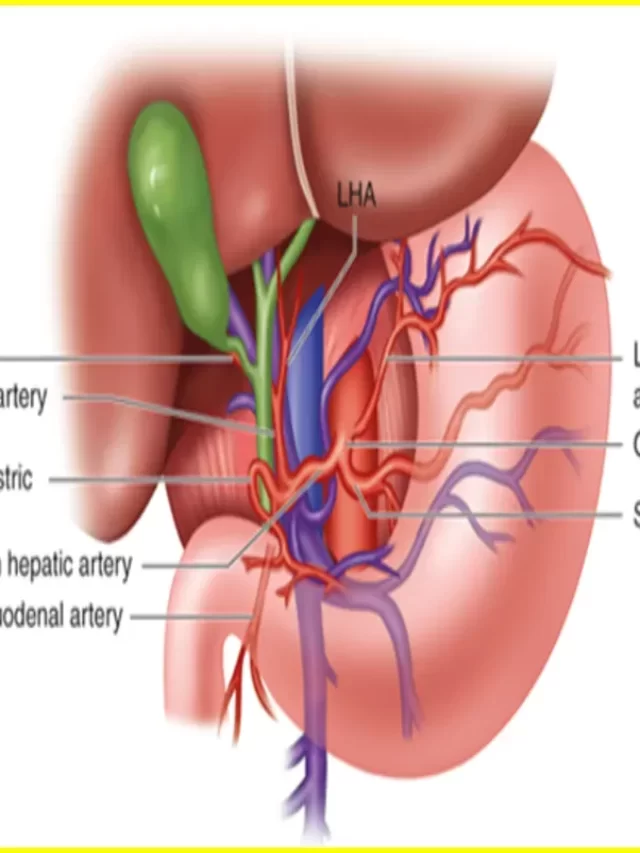What is a C-Arm Machine?
The C-arm machine is an advanced type of medical imaging device based on X-ray technology. They are primarily used for fluoroscopy capabilities, although they also have radiography capabilities. The C-arm machine is called C-arms because of its C-shaped arm, which is used to connect the X-ray source at one end and the detector at the other.
The technology has advanced rapidly since the introduction of the C-arm in the 1960s. Today, mobile imaging systems are an essential part of everyday hospital life.
Article About:- Health & fitness
Article About:- Medical Technology
Article About:-Sports

Thus allowing the physician to monitor progress at any point during the operation and to make any corrections that need to be made immediately. This gives better results of treatment and patients recover sooner.
What is c-arm fluoroscopy
C-arm fluoroscopy is a medical imaging technique that uses a C-shaped arm with an X-ray source and detector to produce real-time, continuous X-ray images of the patient’s body. It is commonly used in various medical procedures, especially in the fields of surgery, interventional radiology, and orthopedics.
The “C” in C-arm refers to the C-shaped arm that can be easily rotated around the patient. This flexibility allows imaging from different angles and positions, providing a dynamic view of internal structures. C-arm systems typically consist of an X-ray generator mounted on one side of the C-arm and an image intensifier or flat-panel detector on the other.
During the fluoroscopy procedure, the C-arm is positioned and adjusted according to the specific needs of the procedure. The X-ray source emits a continuous beam of X-rays, which pass through the patient’s body and are captured by the image intensifier or detector. The captured X-ray images are then processed and displayed in real time on a monitor, allowing medical personnel to visualize internal structures and guide the procedure.
C-arm fluoroscopy is commonly used in a variety of medical procedures, such as:
- Minimally Invasive Surgery: It helps guide surgeons during procedures such as orthopedic surgery, endovascular intervention and spine surgery, helping them visualize instruments and monitor their progress in real time.
- Pain Management Procedures: C-arm fluoroscopy is often used to aid in the administration of injections, nerve blocks, and spinal anesthesia. Real-time imaging helps ensure accurate needle placement.
- Cardiac catheterization: This allows the interventional cardiologist to visualize blood vessels and guide catheter and stent placement during diagnostic and therapeutic procedures.
- Gastrointestinal procedures: C-arm fluoroscopy is used to perform procedures such as barium swallow, barium enema, and endoscopic retrograde cholangiopancreatography (ERCP).
- Urological procedures: It assists in the placement of ureteral stents, percutaneous nephrostomy tubes, and other interventions involving the urinary system.
C-arm fluoroscopy offers several advantages compared to conventional X-ray methods, including real-time imaging, improved accuracy, shorter procedure times and reduced radiation exposure. However, it is important to note that the use of fluoroscopy involves exposure to X-ray radiation, and appropriate safety measures should be taken to minimize radiation exposure to patients and medical personnel.
How does a c-arm machine work?
A mobile C-arm consists of an X-ray generator, an image intensifier or flat-panel detector, and a workstation, with controls and settings.
The C-shaped arm connecting the generator and detector (hence the name C-arms) allows motion around the horizontal, vertical and swivel axes, so that X-ray images of the patient can be produced from multiple angles.
Can you In this the generator emits X-rays which enter the patient’s body which is placed in the middle. The image intensifier or detector converts the X-rays into a visible image displayed on the C-arm monitor.
The specialist can examine the physical details of fractures in bones, implants and devices in real time while performing the procedure, without damaging other parts.
It can identify and examine anatomical details on vessels, bones, kidney stones and the condition of implants and devices at any time.
What is the working principle of C- Arm Machine?
Working principle of C-arm machine is a portable X-ray machine that integrates lighting machine and image processing technology. It is composed of image intensifier, high voltage generator, X-ray tube, operation control system and display.
The working principle of C-arm is composed of image intensifier, shader, CCD camera, X-ray tube, power supply and control unit.

C-arm is the machine commonly used by customers, to assist in the operation of different parts of patients, which plays a unique role in the patient’s operating condition, examination and reduction effect, development and surgical treatment .
What are C-arms used for?
It is widely used in clinical studies including orthopedic, urology, gastroenterology surgery, other complex surgical, pain management and emergency procedures, cardiac and angiography studies and stent or needle placement.
Fluoroscopy technology enables high-resolution X-ray images to be provided on a monitor in real time, so that surgeons can perform more precise procedures with better outcomes for the patient when performing surgery.

C-arm systems are also mobile and provide the surgeon with great flexibility to take images of the patient’s entire body from different angles as needed.
What is the advantage of Sea Arm Machine
patients with limited mobility
When a patient’s condition places limits on their mobility, a C-arm machine adjusts. These machines facilitate the examination of patients sitting in a wheelchair, swallowing chair, or stretcher. The C-Arm is also an effective tool for patients who are unable to sit or stand comfortably at a traditional R/F table.
Emergency or ICU patients
In the emergency department or ICU, diseases can be checked with a C-arm machine. This saves the time that would be required to transport a patient to the radiology department for study in the R/F room.
Independent Behavior and Standalone Rehab Center
Using the C-arm for diseases enables physicians working outside of hospital settings to obtain those images. Without referring patients to another facility or requiring them to expand buildings to include a full R/F suite.

This is particularly helpful for allowing independent practices and standalone rehabilitation facilities to improve the patient experience and access new revenue from reimbursement.
A remarkable limitation
Using the C-Arm for pathological disorders does not give the user the ability to test for gastroesophageal reflux in the same way as in an R/F room.
The C-Arm machine is capable of imaging esophageal modalities throughout the procedure which is generally acceptable in most cases.
Takeaway
If there is already both an R/F room and a C-arm machine, a C-arm machine can save time and inconvenience on occasions where your R/F room is not flexible enough. If working in a facility that is outsourcing its swallowing studies, a C-arm may be just an option.
What are the types of C-arms machines?
1.) Mini C-Arms
Mini-C-Arm machines are used in small hospitals/clinics be it sports medicine, orthopedic and podiatric imaging. These machines come with 4”/6” image intensifier.
These machines are perfect for scanning organs like hands, feet, ankles, knees, elbows and even shoulders. These units are particularly helpful during the determination of external reduction and fracture because bone alignment can also be observed in a non-invasive manner via real time.
2.) Compact C-Arms Machine
Compact C-arm machines are larger than mini C-arms, but not as large as full-size C-arm machines. These compact systems can come in one-piece or two-piece systems, the main advantage of which is its mobility.
If need something bigger than a mini C-arm, but don’t have the room or need for a full-size C-arm. So a compact C-arm machine might be the right idea.
3.) Full Size C-Arms Machine
Full-size C-arm machines are the most sought after model as they allow any type of process to be performed. Full size C-arm machines are used for swallowing tests, spine and torso studies, cardiology, pain management and surgery.
The C-arm has 26 inches of open space, making it large enough to fit a table and the patient between the image intensifier and the tube. They come with 6/9″ image intensifiers and even 12″ image intensifiers, which can be particularly useful for cardiology.

What is the full form of C-arm machine?
The C-arm gets its name from the C-shaped arm in the device, which is used to connect the X-ray source and detector. These C-arm machines are widely used during orthopedic, complex surgical, anesthetics and emergency procedures.
How operators can protect themselves from C-arm radiation
1.) Wearing a proper lead apron is essential to protect employees from radiation.
2.) C-arm machines typically require a 0.5mm lead. It attenuates the scattered X-ray beam.
3.) To make sure it is safe someone may use an X-ray image intensifier to attempt the scan. The person wearing the device then examines the image for cracks or imperfections captured by the C-arm machine. The radiation shield is not folded when stored, as it breaks the lead protection.
4.) The intensity of the radiation decreases with distance. Therefore, a 2-meter safe area from the C-arm system is highly recommended
what is C-Arm machine price
The cost of a C-arms machine usually ranges from $10050 to $25,200. Sometimes there is a special discunt or the city keeps changing according to it.
What is c-arm machine troubleshooting
Troubleshooting a C-arm machine can be complex and should ideally be performed by trained technicians or biomedical engineers. However, here are some general troubleshooting steps that can be tried for some common C-arm machine problems:
- Power problem: Make sure the C-arm is properly plugged into a working power outlet. Check the power switch or button and make sure it is in the correct position. If there are any power-related error messages or alarms, see the user manual or contact the manufacturer for specific instructions.
- Image quality problems: If you’re experiencing problems with image quality, such as blurriness, distortion, or artifacts, check the following:
- Make sure the image intensifier or detector is clean and free of any obstructions or damages.
- Verify that the X-ray source is operating properly and delivering the correct radiation dose.
- Check the cabling and connections between components to make sure they are secure and not damaged.
- If using a flat-panel detector, make sure it is properly calibrated and not experiencing any malfunctions.
3. System Errors or Malfunctions: If the C-Arm displays an error message or malfunction, consult the user manual or contact the manufacturer for specific guidance. They may provide troubleshooting steps or may require you to perform some diagnostic tests to identify the problem. It is important to follow their instructions carefully, as attempting unauthorized repairs or modifications can be dangerous and may void any warranties.
4. Mechanical issues: If the C-arm is not moving or not in position correctly, check for any obstructions or mechanical damage. Make sure all mechanical components, such as the C-arm arm, brakes and locks, are working properly. If there is any unusual sound, vibration or movement, it is best to contact a trained technician to assess and repair the problem.
It is important to note that C-arm machines are complex medical equipment, and improper troubleshooting or repair may result in further damage or compromise of patient safety. Therefore, it is recommended to contact the manufacturer’s technical support or a qualified service technician to correct any significant problems or malfunctions with the C-Arm machine.
Article About:- Health & fitness
Article About:- Medical Technology
Article About:-Sports

FAQ
What is c-arm fluoroscopy used for

C-arm fluoroscopy is used in various medical procedures to provide real-time, continuous X-ray imaging of a patient’s body. It offers dynamic visualization of internal structures, allowing medical professionals to guide and monitor procedures.
How to operate a c-arm

Operating a C-arm requires specialized training and expertise. The specific steps for operating a C-arm may vary depending on the model and manufacturer.
Preparation.
Patient Positioning.
Machine Setup.
Image Acquisition.
Post-Processing and Archiving.
What is a c-arm used for

A C-arm is a medical imaging device that is commonly used in various procedures to provide real-time X-ray imaging. It consists of a C-shaped arm that contains an X-ray source on one end and an image detector on the other. The C-arm can be maneuvered around the patient’s body to capture dynamic images from different angles and positions.
Surgical Procedures.
Interventional Radiology.
Pain Management Procedures.
What is the C-Arm machine used for?
A C-Arm machine is an advanced X-ray-based medical imaging instrument. Despite having radiography capabilities, they are primarily utilised for fluoroscopy. The name “C-Arm” refers to the device’s C-shaped arm, which joins the detector and x-ray source at one end.
How many types of C-Arm are there?
In actuality, there are many sizes of C-Arms, including Mini C-Arms, Compact C-Arms, Full-Size C-Arms, and Super C-Arms. Remember that C-arms can also be modified, for example, with digital retrofit devices for analogue C-arms.
Which C-Arm is best?
OEC 9900. The OEC 9900 can be your finest option if you’re trying to carry out higher-level vascular features. The 9900 and 9800 have the same resolution imaging chain in terms of high-quality images. The movements of the C-arm, steering, hardware, image intensifier, generator, and X-ray tube are all identical.
What is the principle of C-Arm?
Fluoroscopy uses a special device called a C-Arm that spins around your body to view at different angles while emitting a continuous X-ray beam. A screen is shown with a sequence of x-ray images during the operation.
Is C-arm radiation harmful?
The c-arm, also known as the c-arm X-ray machine, is more commonly referred to as the c-arm machine. It is a component of the X-ray computed tomography apparatus. As a result, some radiation will be produced during use, and this radiation may cause operators and medical staff to suffer from varied degrees of injury.





